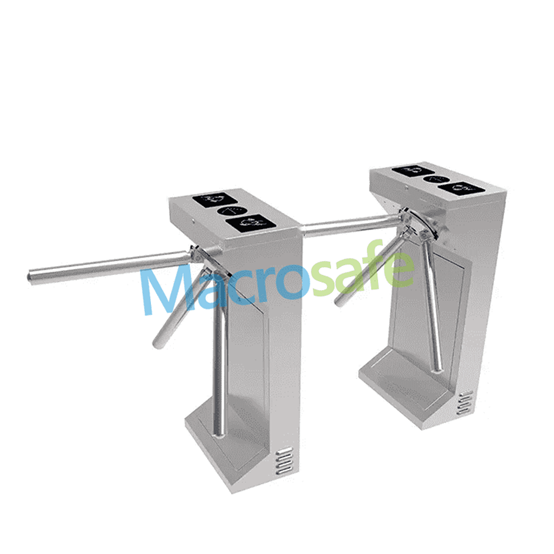Efficient one-way turnstiles play a vital role in managing crowd flow and enhancing security in various environments. These turnstiles are designed with specific features that contribute to their effectiveness and usability. In this article, we will explore the design features of efficient one-way turnstiles that ensure smooth operation, optimize security, and provide a seamless user experience.
1. Sturdy Construction and Durability:
Efficient one-way turnstiles are built with sturdy materials such as stainless steel or reinforced aluminum to withstand heavy usage and resist tampering or vandalism attempts. The robust construction ensures longevity and minimizes maintenance requirements. The turnstiles should also be resistant to environmental factors such as dust, moisture, and extreme temperatures, making them suitable for both indoor and outdoor installations.
2. Single-Pass Control Mechanism:
A key design feature of efficient one-way turnstiles is their single-pass control mechanism. These turnstiles allow only one person to pass through at a time, preventing tailgating or unauthorized entry attempts. The control mechanism can be in the form of rotating arms, sliding panels, or swing gates. The mechanism should operate smoothly and reliably, with minimal chances of jams or malfunctions.
3. Intelligent Sensors:
Efficient one-way turnstiles are equipped with intelligent sensors that detect the presence of individuals and initiate the rotation or opening of the gate. These sensors can use various technologies like infrared, motion detection, or weight sensors to accurately identify the person approaching the turnstile. By ensuring precise detection, the turnstile can authenticate each user and prevent unauthorized access.
4. Biometric Integration:
Many modern one-way turnstiles are designed to integrate with biometric authentication systems. By incorporating technologies such as fingerprint or facial recognition, these turnstiles provide an additional layer of security and eliminate the need for physical credentials. Biometric integration not only enhances security but also improves the user experience by offering a quick and convenient entry process.
5. Customizable Lane Widths:
Efficient one-way turnstiles offer customizable lane widths to accommodate various user requirements. Wide lanes can be provided to ensure easy access for individuals with disabilities or those carrying large bags or equipment. The ability to customize lane widths allows for accessibility and inclusivity, ensuring that all users can pass through the turnstile comfortably and without any hindrance.
6. Intuitive User Interface:
An essential aspect of efficient one-way turnstiles is an intuitive user interface. The interface should be easy to understand and use, minimizing the need for user assistance or training. Clear visual indicators, such as LED lights or display screens, can provide instructions and feedback to users, ensuring a smooth and efficient entry process.
7. Integration with Access Control Systems:
Efficient one-way turnstiles can seamlessly integrate with access control systems such as ticketing or ID card scanning. This integration ensures accurate verification and authentication of users before granting access. Turnstiles can also be integrated with central monitoring stations or security systems, allowing for real-time monitoring, data analysis, and remote control.
8. Emergency Exit and Anti-Panic Features:
In case of emergencies or evacuation situations, efficient one-way turnstile should have dedicated emergency exit paths or anti-panic features. These features allow for rapid exit without the need for any authentication or hindrance, ensuring the safety and well-being of individuals in critical situations.
Conclusion:
Efficient one-way turnstile are designed with specific features to optimize crowd flow management and enhance security. Sturdy construction, single-pass control mechanisms, intelligent sensors, biometric integration, customizable lane widths, intuitive user interfaces, integration with access control systems, and emergency exit features all contribute to the overall effectiveness of these turnstiles. By implementing well-designed turnstiles, organizations can ensure smooth and secure access control, providing a seamless experience for users while maintaining the safety and integrity of their premises.


